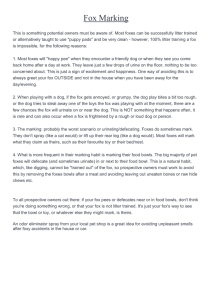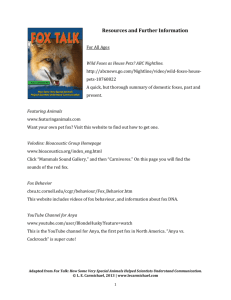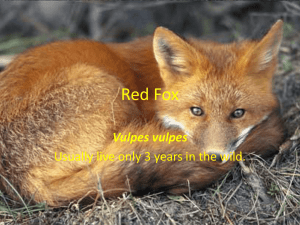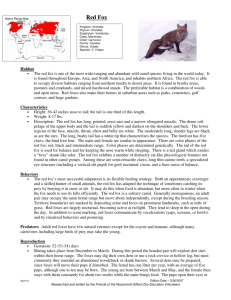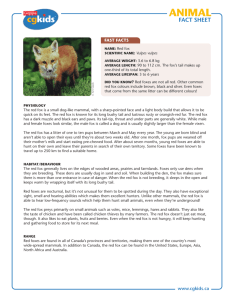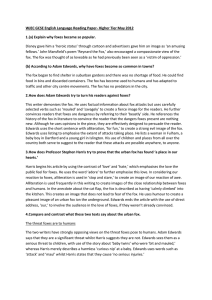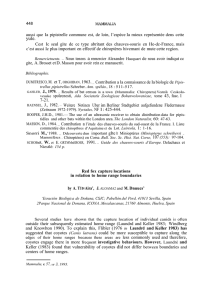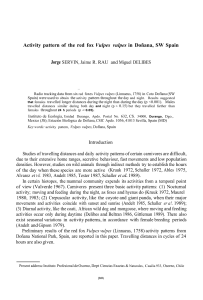EUROPEAN RED FOX Vulpes vulpes FERAL AN
advertisement
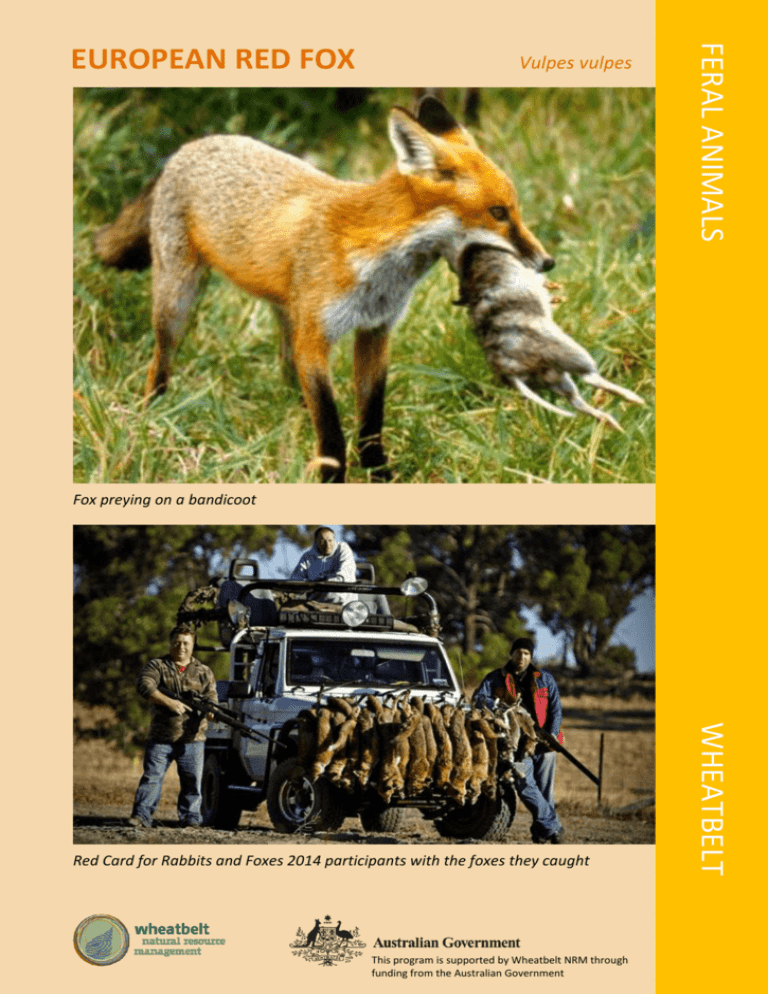
Vulpes vulpes FERAL ANIMALS EUROPEAN RED FOX Fox preying on a bandicoot This program is supported by Wheatbelt NRM through funding from the Australian Government WHEATBELT Red Card for Rabbits and Foxes 2014 participants with the foxes they caught Vulpes vulpes Origin Europe, Asia, North Africa and some regions of North America Habitat The fox became widespread across Australia by the 1850’s. Today it is found in all parts of the continent except the tropical north. Introduced into Tasmania in more recent times its status in that state is unknown. The fox favours lightly wooded country but has adapted well to arid landscapes, alpine areas and urban environments. They are well established in agricultural landscapes including the Wheatbelt. Foxes are mostly nocturnal but it’s not unusual for them to be seen during the day. Reproduction & dispersal Foxes produce litters, around three to six pups, during August/September. Dispersal starts in late summer and continues through to May. Impacts Although primarily carnivorous foxes will readily eat insects and other invertebrates, vegetables and fruit. They commonly raid orchards and gardens, devouring grapes, melons and other fruits. Along with feral cats, foxes pose the greatest single threat to native Australian wildlife, especially small mammals. The decline and extinction of several species of native marsupials has been attributed to fox predation. Foxes are also a major threat to agriculture by preying on new born lambs. In addition to the threat from predation foxes are known to carry diseases such as distemper and mange. Control Fox control activities include shooting, trapping and baiting. Major campaigns to control foxes have been conducted in Western Australia notably “Western Shield” and “Red Card for Red Fox”. The latter is supported by the State and Federal Government and funded through regional NRM groups. The 2014 Red Card for Red Fox program accounted for just under 5,000 foxes shot during community run shooting events. The Western Shield program demonstrated considerable success with numbers of native mammals increasing where fox baiting (often aerial) with 1080 poison was carried out. Increasingly, feral proof fencing is seen as the most effective way to protect species from fox predation. FERAL ANIMALS EUROPEAN RED FOX The Fox is listed as a key threatening process under the Commonwealth Environment Protection and Biodiversity Conservation Act 1999 (the EPBC Act). Distribution T: 61 8 9670 3100 www.wheatbeltnrm.org.au WHEATBELT Wheatbelt NRM PO Box 311 NORTHAM WA 6401

